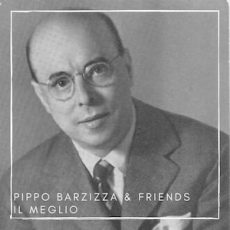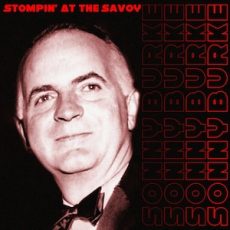
Daily Dose Of Jazz…
Giuseppe “Pippo” Barzizza was born on May 15,1902 in Genova, Italy. He was a child prodigy and at age six he entered the Camillo Sivori Institute to study violin, quickly passing the exam and taking his first award. He could hardly read words but he was already able to write a Mozart symphony without error.
After attending primary and secondary schools he went to Cristoforo Colombo High School, where he studied violin at the Conservatory. Listening to his father’s phonograph, Pippo developed a passion for classical and symphonic music. He became skilled in mathematics and decided to follow mathematical studies, graduating as an engineer.
Barzizza also studied harmony, counterpoint, composition, and instruments. He focused on the piano until 1933, followed by the violin, banjo and the trumpet section. During this period he was the lead violinist at Politeama and performed music for silent movies at the cinema near his home.
By seventeen he had stopped his violin studies for the pursuit of conducting and composition. For the next four years he performed on ships and for orchestras in Genova. However, it was in New York City he first heard jazz and swing music. Through the 1920s Pippo became a skilled arranger, joined an orchestra, served in the Italian Army and founded a military orchestra.
His first line up was playing violin for Blue Star Orchestra, then he conducted the Cetra Orchestra, recorded during the Thirties for Fonit, Columbia, La Voce del Padrone, Odeon, Brunswick and Fonotipia record labels. Post World War II he played on soundtracks and counducted the Modern Orchestra. Retiring from music in 1960 he taught music, established a recording studio in his home
At the age of 92, composer, arranger, conductor and music director Pippo Barzizza, who was active from 1924 to 1960 playing violin, piano, saxophone, banjo, and accordion, died on April 4,1994 in Sanremo, Italy.
More Posts: accordion,arranger,bandleader,banjo,composer,conductor,piano,saxophone,violin

Daily Dose Of Jazz…
Tony Vella was born on April 4, 1937 in Terrasini, a Sicily commune in the metropolitan city of Palermo, Itlay. In 1957 he gained immense experience working with big and small configurations. In Italyhe was the main arranger, for numerous important record houses.
From 1972 he dedicated his efforts to cultural activities and the formation of young talents holding theory courses, and practical instrumental and ensemble music applied to jazz music. By 1975 Tony participated in the Pescara the Jazz Festival with the New Jazz Society of Palermo, the only Italian group invited to perform along with the Zoot Sims Quartet, Antony Braxton, Elvin Jones Quintet, Red Norvo Trio, Chet Baker Quartet, Charles Mingus Group, Roland Kirk Quintet and Don Cherry Organic Music Theatre.
Three years later he formed and directed L’Orchestra in collaboration with the Reinhardt Center for their concert season. Organized by the Associazione Siciliana Amici della Musica and introduced to Auditorium SS. Salvatore of Palermo.
In the Eighties Vella was a partr of the Messina Jazz Meeting with the Brass Group Big Band, as orchestra director and arranger. With the band he has collaborated with international musicians Archie Shepp, Hernie Wilkins, Mel Lewis, Sam Rivers, Toshiko Akiyoshi, Paolo Lepore, Franco Cerri, and Danilo Terenzi.
The next decade he established The Tony Vella Fusion Jazz Band entirely composed from young Sicialian musicians. A big band, modeled on some of the great American orchestras like Quincy Jones. The Fusion Jazz Band presented remarkable arrangements of a repertoire that includes Brazilian and popular jazz. They accompanied singers Beppe Vella, Gaetano Riccobono, and Tony Piscopo, as well as numerous musicians such asCalderone Ignazio, Aldo Oliveri, Benedetto Modica, Giovanni Mazzarino, Sergio Munafò, Aldo Messina, and Sebastiano Alioto, among others.
Pianist, organist, composer, arranger and orchestra director Tony Vella continues to perform, conduct and record.
More Posts: arranger,composer,director,history,instrumental,jazz,music,organ,piano

Daily Dose Of Jazz…
William Orie Potts was born April 3, 1928 in Arlington, Virginia. As a child he played Hawaiian slide-lap steel guitar and the accordion in his teens. At 15 he won an accordion competition with a performance of Twilight Time. After hearing Count Basie on the radio he started studying the piano in high school. He went on to attend Catholic University of America in 1946–1947, then formed his own group under the name Bill Parks, which toured in Massachusetts and Florida.
While serving in the Army from 1949 to 1955 he transcribed charts for Army bands. During this time Bill composed and arranged for Joe Timer and Willis Conover’s ensemble, The Orchestra, which was broadcasted on Voice of America radio. He wrote four of the songs on The Orchestra’s 1954 Brunswick Records LP, and recorded some of their live shows, which occasionally featured guest appearances from Charlie Parker and Dizzy Gillespie.
By 1956 he was leading a house band at Olivia Davis’ Patio Lounge in Washington, D.C. and Lester Young booked an engagement there. Potts convinced Young to record with him on two of the evenings. These recordings were later released as the Lester Young in Washington, D.C. sessions.
The following year he worked extensively as a composer, arranger, and performer for Freddy Merkle’s Jazz Under the Dome album which featured Earl and Rob Swope. Soon after this he suffered a crushed vertebra in a car crash and ended up in a body cast for three months. During his recuperation Bill began working on charts and arrangements for an album consisting of jazz reinterpretations of many songs from George Gershwin’s opera Porgy & Bess.
Fully recovered by 1959, he released a session under his own name titled The Jazz Soul of Porgy and Bess for United Artists Records. It featured a nineteen-piece band whose members included Al Cohn, Harry Edison, Art Farmer, Bill Evans, Bob Brookmeyer, Marky Markowitz, Zoot Sims, Charlie Shavers, Earl Swope, and Phil Woods. The album received a five out of five star rating from Down Beat magazine upon its release.
Following this, Potts spent several years working in New York City before returning to the D.C. area, where he worked locally in addition to touring with and/or arranging for Paul Anka, Eddie Fisher, Ella Fitzgerald, Stan Getz, Woody Herman, Quincy Jones, Stan Kenton, Ralph Marterie, Buddy Rich, Jeri Southern, Clark Terry, and Bobby Vinton.
In 1967 he released an album on Decca Records, How Insensitive, with a studio group called Brasilia Nueve. This group included Markowitz and Sims from the Porgy and Bess session , as well as Tito Puente, Chino Pozo, Mel Lewis, Barry Galbraith, and Louie Ramirez.
As an educator Bill taught music theory at Montgomery College from 1974 to 1990 and was the leader of the student jazz band. He also led a big band for occasional performances at Washington’s Blues Alley nightclub in the 1980s.
Retiring to Fort Lauderdale, Florida in 1995, pianist and arranger Bill Potts died of cardiac arrest on February 16, 2005 in Plantation, Florida.
More Posts: arranger,bandleader,history,instrumental,jazz,music,piano

Daily Dose Of Jazz…
Sonny Burke was born Joseph Francis Burke on March 22, 1914 in Scranton, Pennsylvania and grew up in Detroit, Michigan. He attended St. Ambrose High School, where he was All-State fullback. After one year at the University of Detroit, he transferred to Duke University, where he formed and led the jazz big band known as the Duke Ambassadors.
During the Thirties Burke was a big band arranger in New York City, worked with Sam Donahue’s band, and in the 1940s and 1950s worked as an arranger for the Charlie Spivak and Jimmy Dorsey bands, among others. In 1955 he wrote, along with Peggy Lee, the songs to Disney’s Lady and the Tramp, and with John Elliot for Disney’s Toot, Whistle, Plunk and Boom, which won the 1953 Oscar for Best Short Subject – Cartoons.
He wrote the music for a number of popular songs, including Black Coffee and Midnight Sun, co-written with jazz vibraphonist Lionel Hampton. The song’s lyrics were added later by Johnny Mercer. He was an active arranger, conductor and A&R man at major Hollywood record labels, especially Decca Records where he worked with Charles “Bud” Dant.
Sonny would go on to become musical director of Warner Bros. Records / Reprise Records, and was responsible for many of Frank Sinatra’s albums, producing Sinatra’s My Way, Petula Clark’s This Is My Song, written by Charles Chaplin for his movie, A Countess From Hong Kong.
Burke was the bandleader for recordings of leading singers that included Dinah Shore, Bing Crosby, The Andrews Sisters, The Mills Brothers, Ella Fitzgerald, Mel Tormé and Billy Eckstine.
Arranger, composer, big band leader and producer Sonny Burke died from cancer on May 31, 1980, in Santa Monica, California, aged 66.
More Posts: arranger,bandleader,composer,history,instrumental,jazz,music,producer

Daily Dose Of Jazz…
Antonio Ciacca was born in Wuppertal, Germany March 14, 1969 and raised in Italy. He began playing the piano at the age of seven and studied with Steve Grossman, Jaki Byard, Bruce Barth and Barry Harris.
Ciacca toured Europe with the Larry Smith Quartet in 1995 and 1996, played in Japan with the Eiji Nakayama Quartet in 1998, and toured Europe with Wes Anderson and Steve Lacy in 1999. His study with Jaki Byard in 1998–99, and dedicated the album Hollis Avenue to him.
He founded the Detroit Gospel Singers, and toured Europe with them in 2000. He earned his undergraduate Diploma at the G.B. Martini Conservatory in Bologna, Italy. He became Director of Programming at Jazz at Lincoln Center from 2007 to 2011. Earning his master’s degree in jazz studies at City College in New York City and his DMA, Doctor of Musica Arts at Stony Brook University.
Pianist Antonio Ciacca is currently the adjunct professor of Jazz History at Marymount Manhattan College, and Professor of Jazz Arranging and Composition at the G. Nicolini Conservatory in Piacenza, Italy.
More Posts: arranger,bandleader,composer,history,instrumental,jazz,music,piano




